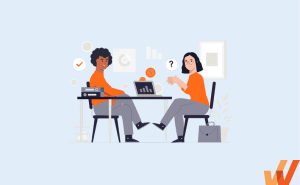
Technology Adoption in the Real Estate Sector
- Published:
- Updated: July 2, 2024

Technology is deeply integrated within the real estate industry, driving innovation and success. Using cloud software, AI, automation, and data analytics, real estate firms can transform their businesses, boost efficiency, personalize services, and remain competitive.
While digital transformation is the process of integrating new technology and tools to redefine how real estate operates and serves customers, digital adoption is how real estate accepts these new digital processes and integrates them into their everyday operations.
Digital transformation in real estate presents unique challenges for this traditionally human-centric sector. Adoption barriers range from upskilling an aging workforce to enabling buyers and sellers with the proper support to improve experiences.
In this article we’ll discuss how real estate enterprises drive the adoption of new digital processes and technologies, the unique technology adoption challenges facing the real estate sector, and how these companies can enable employees, buyers, and sellers with the right guidance and support to fully take advantage of new technologies to drive digital ROI.
How Tech Adoption in Real Estate Compares to Other Sectors
While many industries have embraced digital transformation, the real estate sector lags behind. A Deloitte survey found that 61% of commercial real estate firms still rely on legacy core technology infrastructures, though nearly half are trying to modernize. Overcoming the roadblocks that stand in the way of modernization and adoption is critical to staying competitive.
7 Digital Adoption Challenges Facing Commercial Real Estate Companies
What stands in the way of successful digital adoption efforts? Take a look at these common pitfalls that fail to enable employees and customers to often lead to real estate firms failing to reach adoption goals.
1. Lack of digital skills for real estate professionals
One-third of workers lack the foundational digital skills necessary for today’s jobs, but 92% of jobs require them, according to the National Skills Coalition. This skills gap can be more pronounced in real estate, as the median age of a realtor is 60.
Successfully upskilling a real estate workforce requires assessing current capabilities and delivering training that meets users’ needs. This means creating contextual training paths for different employees (from admins, mortgage officers, real estate agents, etc.), different generations who may be more or less familiar with digital technologies, and different learning styles and preferences.
2. Compatibility, interoperability, and integration challenges
Large organizations use an average of 367 different software tools. This creates data silos that disrupt processes and block collaboration across teams and departments. Bridging these gaps requires policies for data access and infrastructure consolidation. It also means ensuring digital tools are compatible with one another and your processes.
3. Reliance on legacy systems
Transitioning from legacy databases and platforms is challenging. It requires documentation of current workflows, data standardization, and testing. This process gets even more complicated when you consider that you need to continue operations and manage new data during the transition.
However, the value of legacy application modernization becomes apparent as older systems become more of a risk than a benefit, with heavy technical debt and outdated infrastructure.
4. Migrating manual processes to the cloud
Many processes are now in the cloud. According to the 2023 Gartner CIO and Technology Executive Survey, 50% of the spending on cloud platforms is expected to increase in 2023. Also, 47% will decrease investments in legacy infrastructure and data center technologies.
Digitizing paper-based workflows like contract management requires robust, secure cloud solutions. This is a big change if you’re used to manual methods. Convincing stakeholders of the benefits like streamlined closings and remote accessibility is key. You also need a structured implementation plan that minimizes disruption during this digital shift.
5. Tying technology investments to business outcomes
Many real estate firms need help to figure out how new technologies directly improve operations. This makes it challenging to justify adoption and understand ROI. It’s important to compile data and find optimization opportunities across the listing, sales, marketing, and service processes.
Not sure what to measure? Deloitte analysis shows that 81% of professionals use productivity as the prime measure of digital transformation ROI. Real estate organizations need to look at their processes and see how digital transformation and adoption may save them time.
6. Internal resistance to change
Research shows that digital transformation efforts fail about 70% of the time. However, that’s largely because users hesitate to adopt new technology and embrace digital tools. The way leaders approach change management makes an impact.
Motivating the widespread adoption of new technologies is only possible with clearly demonstrating how the tools will enhance existing workflows without disruption or compromising quality. Real estate professionals must know how these systems impact their workflow and the client experience.
7. New technology requires additional IT resources
Implementing new systems requires configuration, training, maintenance, and support. This can strain a real estate firm’s existing IT resources. You can reduce this burden by enabling self-service help resources and frictionless onboarding experiences in workplace applications.
How Real Estate Companies Can Drive Tech Adoption
Want to get your team on board and drive digital adoption in your real estate organization? Use these ideas to boost adoption rates.
1. Develop an outcome and needs-based technology strategy
Before implementing new tools, map out dependencies between processes, roles, and systems to guide your digital strategy. Define target capabilities, experiences, and key performance indicators for different users, from agents and brokers to sellers and buyers.
This strategic technology roadmap keeps initiatives connected to measurable business outcomes, instead of leaving space for disjointed systems and additional silos. It also helps you prioritize high-impact digital transformation efforts.
2. Communicate change early and often
Transparency is critical for gaining buy-in and overcoming resistance when implementing new technologies. Well before deployment, proactively communicate the objectives and benefits to all stakeholders. Clearly explain how the changes will drive efficiency and better client experiences.
Also, celebrate small successes and quick wins early and often in the rollout process. Sharing those wins can build enthusiasm and reinforce the value of digital adoption. This way, your team continues to be excited about the improvements.
3. Provide contextual onboarding and training
Different roles and user personas may have various digital skills and workflow requirements. A digital adoption platform enables tailoring training and onboarding content to meet those needs.
With Whatfix’s digital adoption platform (DAP), enable your technology end-users with contextual in-app guidance and moment-of-need support. With Whatfix’s no-code Visual Editor, non-technical team members can create in-app experiences that engage users and provide assistance in the flow of work.

With Whatfix, create:
- Tours and Task Lists to contextually onboard new end-users to legal technology with a guided experience.
- Flows that take end-users step-by-step through their tasks and help drive the adoption of complex, multi-step workflows through in-app training.
- Smart Tips that provide additional support and relevant information at the moment of need.
- Pop-Ups to make company announcements, remind employees of upcoming deadlines, drive awareness of new features or process changes, and more.
- In-app Surveys to capture feedback from real estate firm employees and customers interacting with your digital experiences.

4. Enable end-users with moment-of-need support
Even with effective onboarding, questions and needs for assistance will come up. Real estate organizations should supplement training with available, moment-of-need performance support resources.
With a digital adoption platform (DAP) like Whatfix, real estate organizations can enable their end-users to fully adopt new technologies, follow complex digital workflows, and achieve heightened levels of productivity through a mix of in-app guidance and contextual support.
Whatfix Self Help provides on-demand, moment-of-need support to end-users, both employees and customers, in the form of a searchable resource center that overlays your digital application UI. Self Help integrates with your SOPs, knowledge base, training content, videos, and more – aggregating and curating all your help documentation into one central repository.

5. Analyze digital friction with end-user analytics
Digital adoption analytics provide visibility into where users face friction across technology experiences. The behavioral data you gain reveals actual usage patterns. This can help you figure out where users need more support.
With Whatfix, track and analyze end-user behavior with User Actions. This empowers real estate IT teams to identify areas of end-user friction, map optimal user flows, build flows for different user cohorts, and more. Use this data to create new in-app guidance and end-user support content and continuously optimize and test new workflows and features to create more efficient, user-friendly technology experiences that drive value.
6. Tackle continuous change with in-app communication
New features, compliance updates, and improvements lead to ongoing change. Use in-application communication and notification capabilities to seamlessly broadcast these changes. With a DAP like Whatfix, create in-app pop-ups and notifications to broadcast updates, announce new features, and trigger relevant guidance.
7. Collect end-user feedback with in-app surveys
User feedback is valuable for understanding adoption barriers and uncovering usability issues. This feedback can also help you come up with ideas for experience optimization. With Whatfix, create in-app surveys to gather both client and employee feedback.
8. Manage all subscriptions and licenses
With real estate firms using hundreds of tools, Enterprise Insights from Whatfix unifies visibility into usage, spend, renewals, and adoption to optimize the tech stack. This way, you don’t just implement change for the sake of it or stick with a system just because you have access to it. Instead, you always make the most of the tech your organization pays for.
Software clicks better with Whatfix's digital adoption platform
Enable your employees with in-app guidance, self-help support, process changes alerts, pop-ups for department announcements, and field validations to improve data accuracy.
Accelerate your real estate digital transformation by enabling your employees and customers with contextual in-app guidance and real-time support with Whatfix’s digital adoption platform (DAP).
Whatfix enables real estate enterprises with its no-code Visual Editor to create in-app, moment-of-need support and contextual guidance. This reduces time-to-proficiency and achieves new levels of productivity and proficiency through better software adoption. It also provides customers with self-service, personalized, and guided user experiences.
Whatfix empowers a data-driven approach by analyzing tech experiences with end-user behavioral analytics and event tracking. This identifies areas of friction in your digital processes and tech experiences, allowing you to create optimal, contextual user journeys across various end-user segments. Use Whatfix’s Visual Editor to overcome these friction areas with additional in-app guidance, nudges, queues, and support.
How does it work? Whatfix empowers real estate organizations to:
- Create in-app Flows and Task Lists that guide employees and customers step-by-step through digital processes and applications.
- Enable end-users with Self Help, providing a searchable help wiki that connects to all your help and support documentation, FAQs, help desk articles, and more – that overlays on your digital UI.
- Notify end-users of application process updates, compliance changes, company announcements, and more with Pop-Ups and Beacons.
- Provide contextual Smart Tips that enable end-users with timely information that nudges the to take the correct in-app action.
- Use Field Validation to ensure data is entered in full, in the correct format.
- Collect end-user feedback such as NPS, training and onboarding feedback, and bug identification with In-App Surveys.
- Analyze end-user behavior with User Actions and Enterprise Insights by tracking custom in-app events to optimize user journeys, segment users into cohorts, identify areas of friction, and more.
With Whatfix, you can understand how technology is being used and what is being underused. This makes it easier to adjust software training and adoption strategies. All to empower agents, brokers, and clients to reach new levels of success with digital tools.

Thank you for subscribing!

